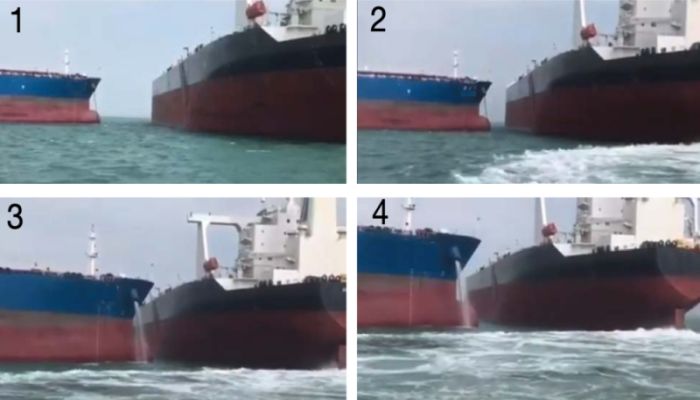Real Life Incident: Contact With A Buoy And Near Collision
September 14, 2022 GENERAL
A VLCC in ballast was approaching port for anchoring. The pilot was confirmed for 10:00. Weather conditions were good with a northerly wind of about 10 knots, good visibility and slight sea conditions. A tidal stream was running in the WSW direction at about 1.8 knots. The engine was put to dead slow ahead to drop off speed and adjust vessel’s arrival at the pilot boarding area for the prearranged time.
At 09:37, the Master asked the OOW if he had established a visual contact with the pilot boat. The OOW responded positively. The bridge team was confident that the pilot boat would be at the designated position before their vessel, so no action to further slow or stop the vessel was taken. Several minutes later, with the vessel steering 300 degrees and with a speed of 5.8 knots, the remaining distance to the pilot station was about 1.2nm.

At 09:50, the vessel was heading 315 degrees at a speed of about 5.3 knots and the distance from the pilot station was now only about 0.7nm. The Master stopped the engine. The vessel continued to slow and the heading now increased slowly to starboard. The vessel was closing on a buoy. At 10:00 the speed was about 4 knots and the pilot boat had not yet arrived. The Master ordered hard starboard and set the main engine to dead slow ahead in order to avoid the buoy but to no avail; they struck the buoy about four minutes later on the port side near midships. The buoy slid down the vessel’s port side and cleared the stern with only minor damage.
But now, as the vessel drifted with a Speed Over Ground (SOG) of 3.4 knots, their trajectory was towards a nearby anchored vessel. The Master attempted to stop the vessel but the distance to the anchored vessel was now only 0.5 nm. The Master quickly concluded that it was not feasible to stop the vessel. Instead, by putting “Full Ahead” on the engine in combination with a succession of wheel alterations (hard to starboard and then hard to port) they managed to avoid contact with the anchored vessel.
About 20 minutes later, the pilot boarded and subsequently safely anchored the vessel in the anchorage area.
The company report found, among others that;
- The passage plan lacked the appropriate precautions and contingency arrangements. Specifically, the speed of approach and the waiting area for the approach were not adequately planned.
- The large drift angle and the proximity of navigational hazards was not determined at an early stage.
- The current’s effect on vessel’s drift was not effectively monitored and assessed. As result, the bridge team did not adjust the vessel’s course and speed in a timely manner while approaching the pilot boarding station.
- BRM was less than adequate. The Master did not explicitly inform the ship’s bridge team about his intentions related to approaching and manoeuvring. As the ship progressed, the OOW’s comprehension of the situation did not trigger any actions for clarification or corrective action.
- The OOW did not provide sufficient information related to the pilot boat approaching. Instead, he confirmed that the pilot boat was approaching without informing the Master of the actual distance from the vessel and the required time to arrive alongside. As a result, the Master wrongly assumed that the pilot boat was closer than it actually was, so he continued on instead of stopping.
Source: https://www.marineinsight.com/case-studies/real-life-incident-contact-with-a-buoy-and-near-collision/






